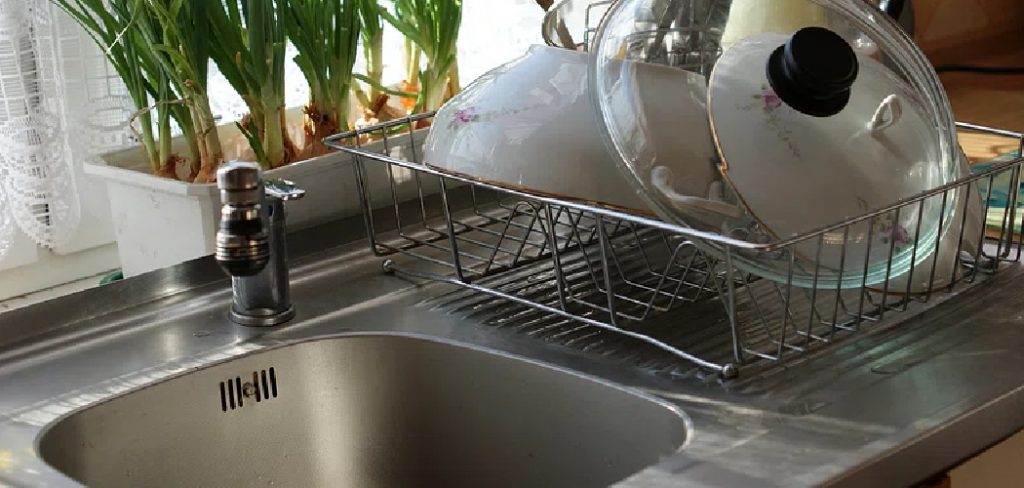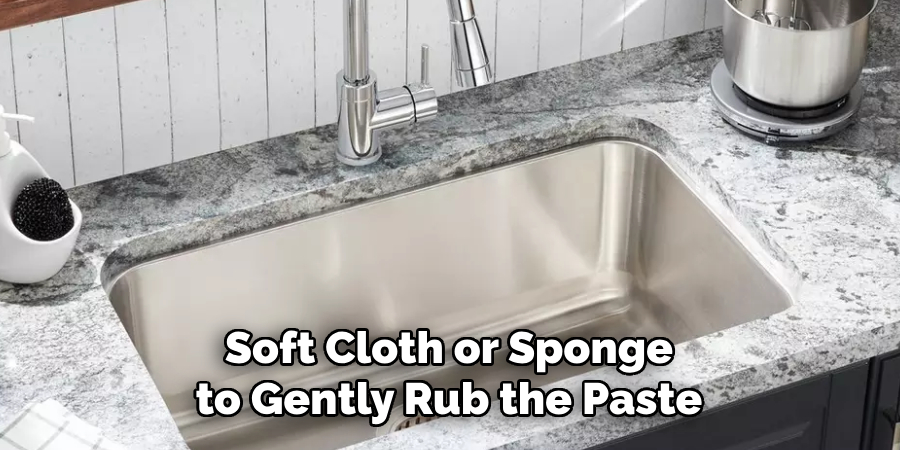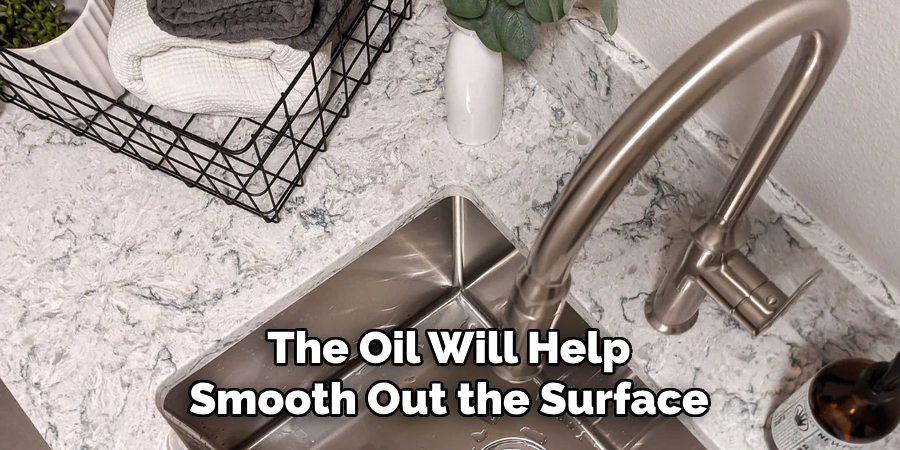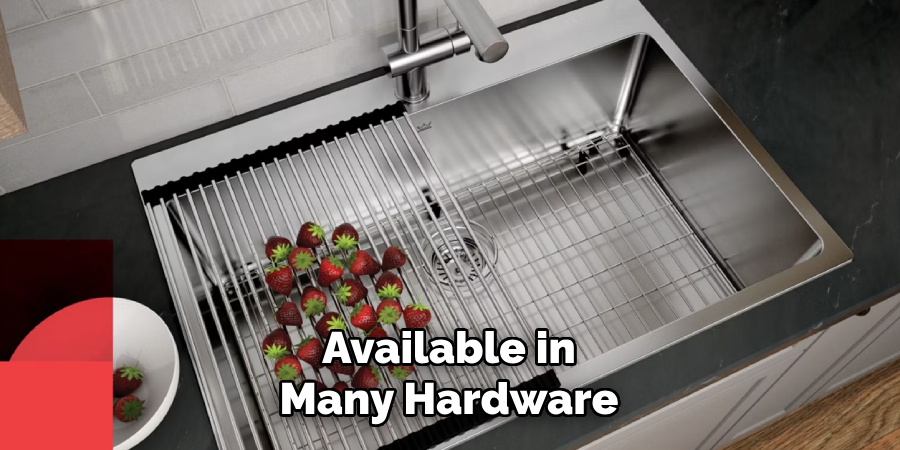Stainless steel sinks are a popular choice for kitchens due to their durability, sleek appearance, and resistance to rust. However, over time, they can develop scratches that detract from their polished look. Fortunately, with a few simple techniques and tools, you can effectively minimize or remove these scratches, restoring your sink’s original shine. This guide will walk you through how to take scratches out of stainless steel sink.

Common Issues with Stainless Steel Sinks
One of the most common issues with stainless steel sinks is their tendency to develop scratches over time. While stainless steel is highly durable, its surface is still susceptible to marks from daily use, such as scuffs caused by pots, pans, or utensils. Deep grooves can sometimes trap debris, making cleaning more difficult. Additionally, improper cleaning techniques, such as using abrasive pads or harsh chemicals, can exacerbate the problem, dulling the finish and creating even more scratches. Understanding these vulnerabilities can help you take proactive steps to maintain your sink’s appearance and prevent further damage.
Why Stainless Steel Sinks Get Scratched
Stainless steel sinks get scratched due to their nature as a relatively soft metal compared to materials like ceramic or granite. Everyday kitchen activities, such as placing heavy cookware, dragging utensils, or chopping ingredients near the sink, can all contribute to surface scratches. Additionally, abrasive cleaning tools, like steel wool or scouring pads, often cause micro-scratches that accumulate over time, making the sink appear dull. The metal’s finish, whether brushed or polished, also plays a role in how visible scratches appear, as certain finishes reveal marks more prominently. While stainless steel is built to last, regular care and proper maintenance techniques are essential to manage and minimize scratches effectively.
10 Methods How to Take Scratches Out of Stainless Steel Sink
1. Using Baking Soda Paste
Baking soda is a mild abrasive and an excellent cleaning agent for stainless steel sinks. To remove minor scratches, create a paste by mixing baking soda with water until it forms a thick consistency. Apply this paste to the scratched areas and use a soft cloth or sponge to gently rub the paste into the scratches. Always scrub in the direction of the grain of the stainless steel to avoid further scuffing. Afterward, rinse the area with warm water and wipe it down with a clean microfiber cloth to buff the surface. This method works well for light surface scratches and is safe for regular maintenance.

2. Using a Stainless Steel Cleaner and Polish
Commercial stainless steel cleaners and polishes are formulated to remove surface imperfections, including minor scratches. These products are designed to clean and restore the finish of the stainless steel while also providing a protective coating that helps prevent future scratches. To use, apply the cleaner or polish directly onto the scratched area, following the product instructions. Use a clean microfiber cloth to buff the surface in circular motions, working along the grain of the steel. This not only helps diminish the appearance of scratches but also adds shine and protection to the sink.
3. Using a Fine Abrasive Pad
For deeper scratches, a fine abrasive pad (such as a Scotch-Brite pad) can be an effective tool to buff away the damage. It’s important to choose a pad that is designed for stainless steel and has a fine grade, so it doesn’t cause further damage to the surface. Rub the pad gently in the direction of the grain of the stainless steel. This method can help blend in the scratch with the surrounding surface. After using the pad, rinse the sink thoroughly and wipe it dry with a soft cloth. This technique works well for moderate scratches and can help restore a smooth surface without leaving noticeable marks.
4. Polishing with Olive Oil
Olive oil is a natural product that can help polish stainless steel surfaces and make scratches less visible. While it won’t completely remove deep scratches, olive oil can be used to buff out minor imperfections and restore a gleaming finish. Apply a small amount of olive oil to a clean microfiber cloth and gently rub it over the scratched areas in the direction of the grain. The oil will help smooth out the surface and give the sink a polished appearance. After polishing, wipe away any excess oil with a dry cloth. This method is easy and effective for maintaining the look of your sink.

5. Using Steel Wool for Severe Scratches
For severe scratches that are more prominent, you can use a very fine steel wool pad, such as 0000-grade steel wool, which is gentle enough to avoid damaging the stainless steel but abrasive enough to reduce deeper scratches. When using steel wool, be sure to follow the grain of the stainless steel to minimize the appearance of new scratches. Lightly buff the scratched area with the steel wool, applying gentle pressure. Afterward, clean the area thoroughly with water and a mild soap solution, then buff the surface with a microfiber cloth to restore its shine. Steel wool can be particularly effective for removing tough marks but should be used carefully to avoid causing additional scuffing.
6. Applying a Mixture of Vinegar and Olive Oil
A combination of vinegar and olive oil can provide an excellent solution for removing scratches and polishing stainless steel sinks. Vinegar is a natural cleaner that helps lift dirt and grime, while olive oil works as a polish to restore the sink’s shine. Mix equal parts vinegar and olive oil in a spray bottle and shake well. Spray the mixture onto the scratched areas and allow it to sit for a few minutes. Then, use a microfiber cloth to rub the solution into the scratches, working in the direction of the grain. This method helps remove light surface scratches while also giving the sink a shiny, polished finish.
7. Using a Polishing Compound
Polishing compounds designed for metal surfaces are another option for removing scratches from stainless steel sinks. These compounds often come in paste or liquid form and are formulated to smooth out surface imperfections. To use, apply a small amount of the polishing compound onto a soft cloth or sponge and rub it gently into the scratched area in circular motions. Be sure to follow the direction of the grain, and avoid using too much pressure. Once the scratch is less visible, wipe off any excess product with a clean cloth and buff the surface to restore its shine. Polishing compounds are particularly effective for medium to light scratches and are available in many hardware or home improvement stores.

8. Using a Buffer or Polishing Machine
For a more professional-grade finish, using a buffer or polishing machine can help smooth out scratches and restore the stainless steel sink to its original condition. Attach a polishing pad to the buffer and apply a polishing compound to the scratched area. Turn on the buffer and carefully move it across the surface, ensuring that the movement follows the grain of the steel. The buffer’s rotating motion will help remove scratches and imperfections quickly and efficiently. This method is ideal for larger scratches or sinks with a heavily damaged finish. However, it requires careful handling to avoid over-polishing or damaging the surface.
9. Sanding the Scratched Area
For deeper scratches that cannot be easily removed with the previous methods, sanding may be necessary. Begin with a fine-grit sandpaper, such as 400 or 600 grit, and lightly sand the scratched area. Always sand in the direction of the grain to prevent introducing new scratches. After sanding, gradually increase the grit to finer levels (800, 1000, or even 1500) to smooth out the surface. Once the area feels smooth, polish the surface with a stainless steel polish or a polishing compound to restore the sink’s shine. Sanding can be effective for deeper scratches but should be done carefully to avoid creating visible sanding marks.

10. Professional Refinishing
If the scratches are particularly deep or extensive, professional refinishing may be the best option. Many professional services specialize in restoring stainless steel surfaces, including sinks. They will use specialized tools, abrasive techniques, and polishing compounds to remove deep scratches and return the sink to its original condition. Professional refinishing is often used when other methods haven’t provided the desired results or if the sink has significant damage. While this method may involve a higher cost, it can be the most effective solution for restoring the sink’s appearance and durability.
Conclusion
Removing scratches from a stainless steel sink is a process that requires attention to detail and patience. From simple home remedies like using baking soda or vinegar to more advanced methods such as sanding or professional refinishing, there are many techniques to restore the sink’s appearance. Thanks for reading, and we hope this has given you some inspiration on how to take scratches out of stainless steel sink!
Edmund Sumlin is a skilled author for Metal Fixes, bringing 6 years of expertise in crafting a wide range of metal fixtures. With a strong background in metalwork, Edmund’s knowledge spans various types of fixtures, from decorative pieces to functional hardware, blending precision with creativity. His passion for metalworking and design has made him a trusted resource in the industry.
Professional Focus:
- Expert in Metal Fixtures : Edmund aesthetic specializes in creating durable and innovative metal fixtures, offering both appeal and functionality. His work reflects a deep understanding of metalworking techniques and materials.
- Sustainability Advocate : He is dedicated to using sustainable practices, ensuring that every fixture is crafted with eco-friendly methods while maintaining high-quality standards.
In his writing for Metal Fixes, Edmund provides valuable insights into the latest trends, techniques, and practical advice for those passionate about metal fixtures, whether they are professionals or DIY enthusiasts. His focus on combining artistry with engineering helps others discover the true potential of metal in design.


